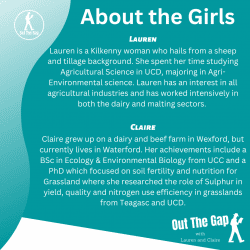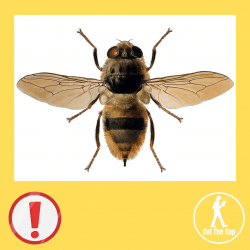Out The Gap – Issue 6


Buzz Off
First cut has come and gone and the silage fever has passed for now. In this issue of Out The Gap, we turn our attention to the grazing stock and wonder, “Sure it’s probably time to dose those for worms and files at this stage, be no harm”. First we need to consider what dose should we give them this time of the year. Should we use a pour on? Will we just give them a bit of everything sure? All valuable questions and thoughts that may begin to circulate amongst our train of thought. But, do we actually need to dose and if we do, what is the type of parasite burden on the farm, are the real questions that ought to be asked.
Warm, humid, and rather sticky weather conditions that currently prevail, make daily tasks for both person and animal rather difficult. You can’t go for a walk without looking like you are practicing to be the next World Champion MMA fighter by trying to get the flies away. It’s the same for animals, maybe not the air punching part, but constant attack by nuisance flies can be a major source of problems and annoyance for animals. The consistent source of irritation caused when at grass, interferes with the animals normal grazing activity. Not just a nuisance affecting productivity, flies can also act as vectors for diseases that can result in serious consequences for animal health. Capable of transmitting viruses and bacteria, certain parasites, like flies are linked to the spread of common diseases such as summer mastitis and pink eye.
There is five broad categories of flies in Ireland
The house/ stable fly, face flies, head flies, warble flies and blowflies.
Stable flies can be found close to buildings inhabited by animals. During a combination of warm and wet weather they may enter sheds and be an annoyance to housed cattle, particularly at feedlots. The irritation caused by their bites results in a reduced feed conversion efficiency, affecting both meat and milk production.
Face flies are prominent where cattle are grazing, potentially causing damage to the eye tissue of affected animals. Such flies have been linked to the transmission of Moraxella bovis, the bacteria responsible for ‘pink eye’ or infectious Bovine Keratoconjunctivitis (IBK). Pink eye is an inflammatory bacterial infection of the eye that can cause permanent blindness in severe cases. A highly contagious infection where watery eye discharge is evident, aversion to sunlight, signs of irritation, excess blinking and reddening and swelling of the eyelids. The eye will go cloudy in the middle and treatment options are based on antibodies and anti-inflammatory drugs. Caution should be carried out around young stock in the coming months as they tend to bunch together to feed during the summer months. If feeding meal consider if there is sufficient feed space per head.
Head flies are often present in large swarms, this causes a lot of irritation and annoyance which in turn can result in self-inflicted wounds from scratching or air punching to keep the flies from landing at the animals ears. Both face flies and head flies pose a risk of pink eye and there is also strong evidence to suggest that head flies are involved in the transmission of summer mastitis. At this time, summer mastitis can be a problem for autumn calving cows or maiden heifers. It can be directly linked to flies landing on teats and spreading infection. The distinctive swollen udder with a yellow custard like appearance of summer mastitis discharge are tell-tale signs. Once on their feet cows can show stiffness in the back legs and are reluctant to walk. You may see flies on the udder during examination, the cow or heifer could be running a high temperature and if left untreated there is a risk of abortion. In severe cases it can be fatal.

Blow flies are associated with fly strike in sheep, cattle can succumb to infestation too. Fly strike is caused by a combination of bacteria that work together, giving rise to the condition. S. dysgalactiae, Peptostreptococcus indolicus and Acranobacterium pyogenes are the main bacteria associated. Animals that are grazing in fields are more susceptible with high hedges, near wooded areas and mild humid weather.
Fly prevention can be a multi-modal approach, incorporating both environmental factors and the use of repellents. Thinking about the environment the animals are grazing in during the summer months is the first step to minimising fly exposure. The 4% Garlic contained in the Nutri V-Phyt Block allows the consumed garlic to be secreted from the animals skin, acting as a barrier that is repellent to insects. Check out the video with Martin Keating on our You Tube channel also.
While the weather may be bad for flies it’s great for growth and hopefully second cut silage and the harvest will come good.
Keep buzzing along!

